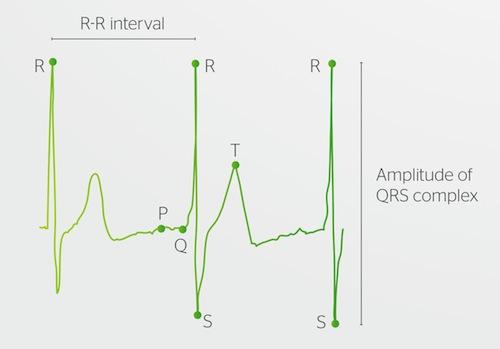Case Study: Tiny Wireless Heart Monitor
December 12, 2011

Intensive care does not come cheap. Specially trained medical staff, complex monitoring equipment, exotic drugs, and the ability to provide round-the-clock care stretch hospital budgets.
But even the hardest-hearted administrator isn't about to slash intensive care funding. These specialized facilities deal with critically ill people, and managers aren't keen to be seen as putting a price on a human life.

Nonetheless, there is an ethical way to reduce the expense of such a department by reducing the risk that patients who've recovered sufficiently to move to a general ward don't relapse and return. And as if that weren't incentive enough, the increasing vigilance of insurance companies looking for the slightest excuse to offload their financial responsibilities should close the deal.
"Around a third of patients currently relapse and have to be returned to intensive care," says Keith Errey, CEO of Isansys Lifecare, an Abingdon, UK, company that develops and implements continuous physiological patient information platforms. "The cost of putting a patient back into critical care is an order of magnitude more than keeping them on a general ward."
Intensive care is characterized by rigorous patient supervision. Sick people are constantly monitored by an array of expensive equipment displaying and recording vital signs such as pulse, blood pressure, respiration rate, and blood oxygen level. Medical staff can rapidly intervene if these vital signs change for the worse.
But when a patient stabilizes and moves to a general ward, there's a step change in the observation routine. That's acceptable for an improving person, but it's a problem for one who's about to relapse.
"On the general ward, patients are monitored perhaps once every two hours or even every four hours," says Errey. "Unfortunately, a lot of changes can occur between readings."
What's needed is a way to duplicate the continuous monitoring of the intensive care environment on the general ward, but without the expense. That way, patients in danger of relapse can be identified early and treated before becoming sick enough to merit a return to critical care. No such solution exists, but Errey says that's about to change -- partly due to ultra-low-power wireless technology.
"At Isansys, our business model is to offer a continuous physiological monitoring service for general care patients comprising monitoring devices for vital signs such as pulse, blood pressure, and blood oxygen levels," he explains.
Isansys' solution starts with a semidisposable wireless cardiac monitor supporting low-cost continuous electrocardiogram (ECG) heart monitoring. The LifeTouch HRV011 monitor is available for deployment via structured proof-of-concept studies. It is important to note that the monitors are not being offered for commercial or clinical use in the US.
To the experienced medical practitioner, an ECG trace of a series of heartbeats reveals much about the health of a patient. The trace tracks the electrical activity of the heart, which directly correlates to the muscle activity during the beat and reveals how the heart is performing.
For example, a larger than normal amplitude of the ECG's QRS complex indicates cardiac hypertrophy (increased heart muscle mass), and a shortening duration can indicate the onset of arrhythmia (irregular heart rhythms that can lead to cardiac arrest).
Another key clinical parameter is heart-rate variability, which is measured by looking at how the relative positions of the R peaks vary over time. "The normal state exhibits a large change in variability, whereas the pathological or sick state exhibits minimal variability," Errey says. "There have been many algorithms developed to predict a series of things ranging from stress all the way through to imminent cardiac arrest. It is an interesting parameter to measure with accuracy, and that's what we've done" with LifeTouch.
About the Author(s)
You May Also Like





